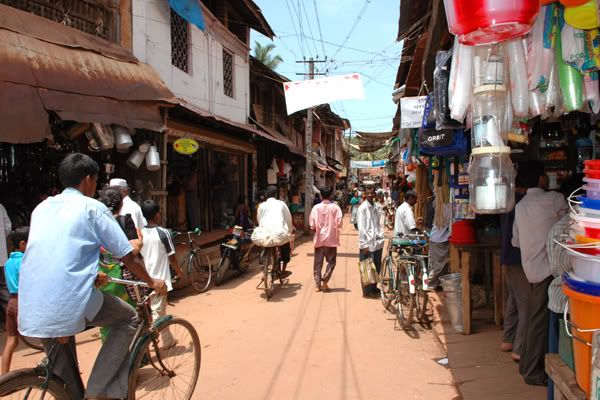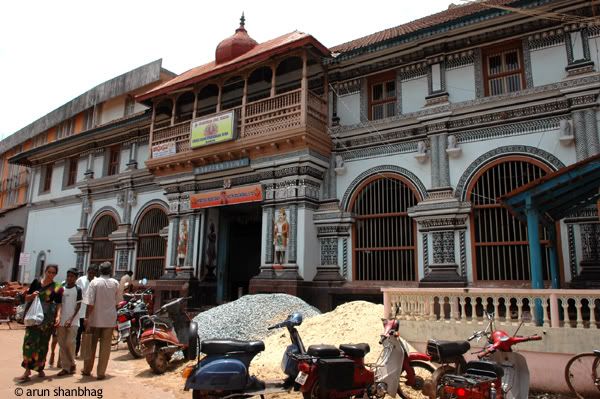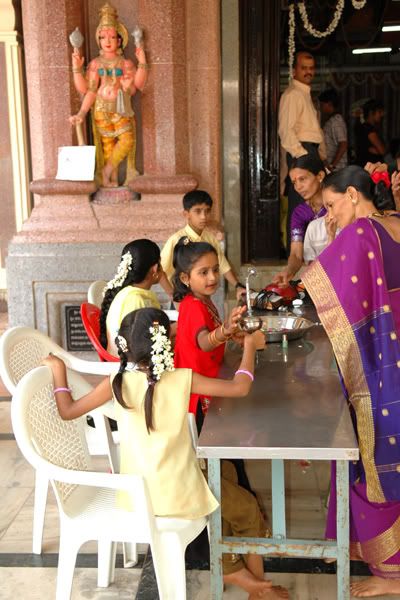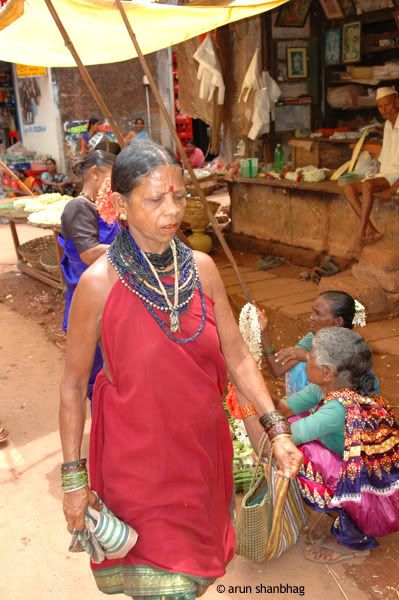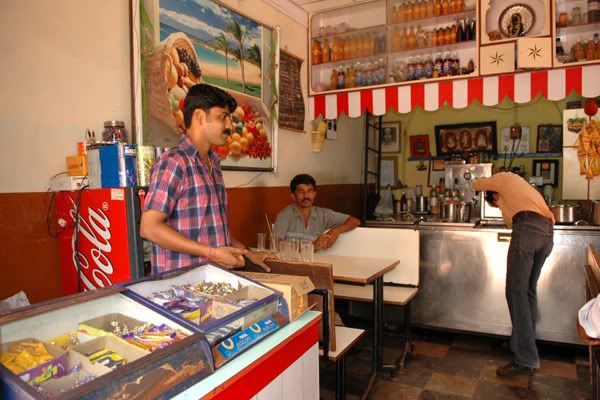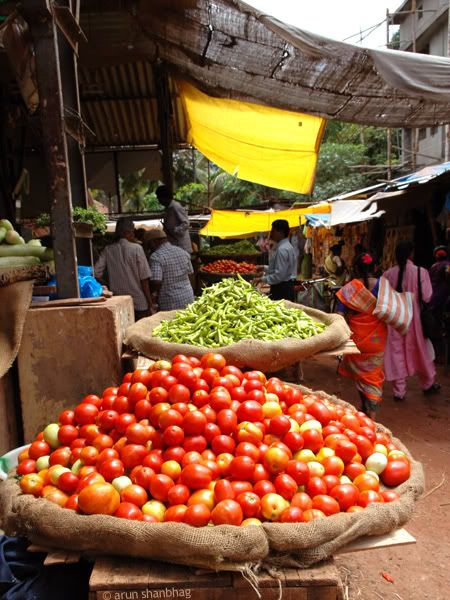
On every visit to India, I follow a similar schedule. We head to Goa to pay our respects at the Ramnathi Devasthan in Ponda. From there we head south along the coast to Kumta in Karnataka.
Kumta is a sleepy town. The busiest part is Main Street, called paent, which is only a few blocks long. The place for any and all your shopping. Its where all the locals 'hang-out' too. There is not much else to do in Kumta. Rest and relax.
And best of all - I get to speak konkani all over town! My konkani is good enough, I easily pass off as "from Mumbai" (which is not incorrect)! Yes, every shop-owner, rickshaw driver, stall-wallah, lady selling vegetables, and their brother speaks Konkani. :-) So even among strangers, I feel at home.
In the mornings, the local market is buzzing. It's only a few rows of vegetables and fruits. And not surprisingly, friendly folks and juicy vegetable and fruits everywhere.
Join me for a short tour of the Kumta Vegetable Market!
This pair of smiley guys seemed to have the biggest stall there.
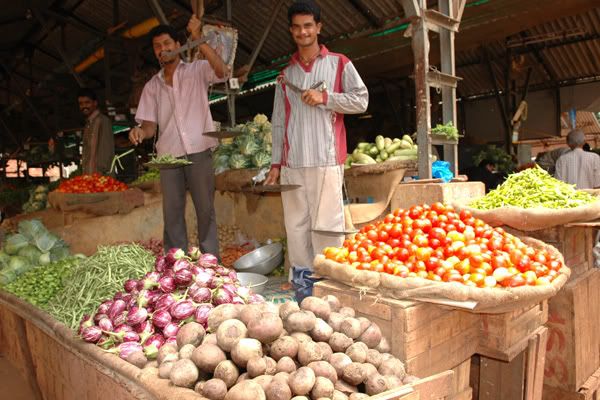
These brinjals were mouth watering. Appears to be a hybrid between a "Gullaen" and the brinjal. Can someone shed more light on this?
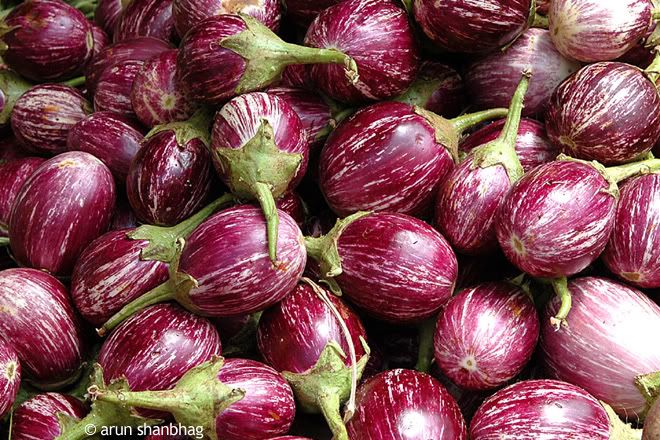
Yes! MANGOES! BTW, this was from our May-June trip. Those little green ones are deceptively sweet. Called manik-bhat, a local variety and very popular all over the konkan coast.

Who said, sucking up cannot be sweet!
Thats the way to eat the manik-bhat mangoes. Wash (optional), pinch the stem and make a small hole. Gently roll and squeeze the mango, so the pulp is ejected into your mouth. Suck, fast. Discard the leftover at a nearby cow who will glady finish it off :-)
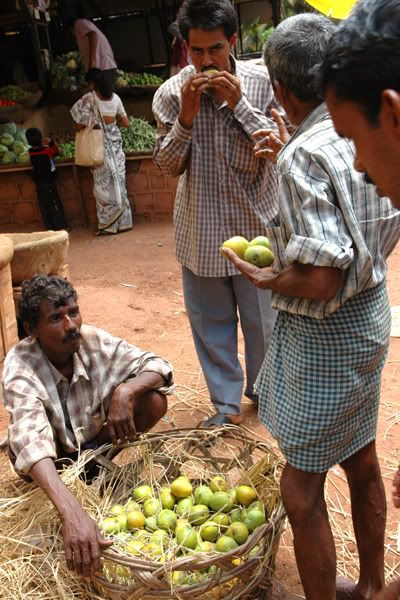
As I negotiated my way around the market shooting pics and striking conversation with the shop-keepers, this girl selling a grab-bag of spices and colors was giggling. Not sure what she found humorous. When I turned my camera on her, ... she was full of modesty.
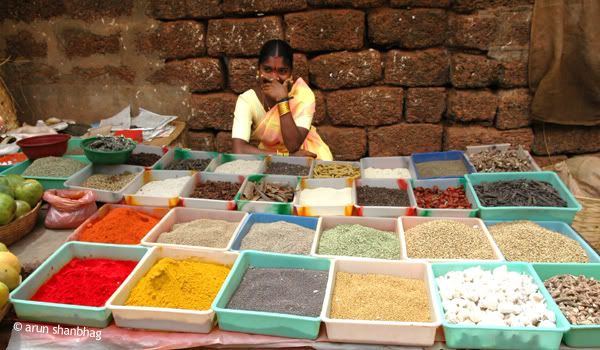
A tighter crop of the 'spice girl', highlighting her endearingly beautiful features.

For every guy who ever wondered: What women really want?
The largest crowd was in front of this stall which sold bangles, earrings, nose-rings, bracelets, anklets and other trinkets. Note the women who have orange flowers in their hair (3rd from left; 2nd and 4th from right). Those are the traditional aboli flower strands, very common in the konkan. (see next pic).
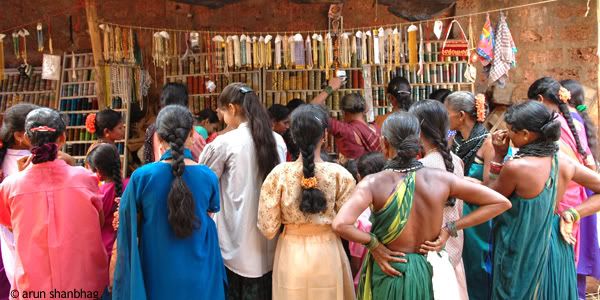
On the market, a woman was selling these (l to r) drumsticks topped with woven aboli flower strands; dainty lady-fingers (a longer and delicate version of the Okra available in the US); a ripe pineapple; more drumsticks (these appear less fleshy) and a bowl with more flower stringers.
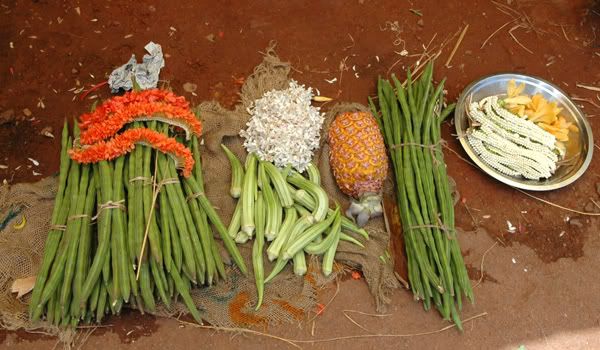
My question is this: Even if the women selling flowers, spices, and the small guys selling mangoes, were to sell all their produce by the end of the day (highly unlikely), how much money would they earn? Would it be enough to buy other food for their familiy, clothes, school tuition? savings perhaps? Something to think about!
My visits to Kumta are times for introspection. While M stays at home and rests and lazes around, I walk the markets, the alleys, the temples, and talk, talk and talk. With the guy selling mangoes, the vegetable seller, the woman here, the flower seller there, the shopkeeper elsewhere. I want to know them, see the world from their eyes. With all my education and training, what can I do for them? What can you do for them?


